Unit 107 - 4930 Industrial Lane Kissimmee, FL 34758
(407) 483-4825
UK Logistics Center
Unit 5 Crown Industrial Estate
Oxford Street
Burton-on-Trent
DE143PG
01283 450179
ECD Auto Design is an Equal Opportunity Employer.
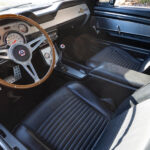
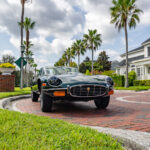
The Ford Mustang’s story begins in 1964 when Ford introduced it as a sporty, affordable car that appealed to a wide audience. Designed to combine performance, style, and practicality, the Mustang quickly became a sensation. The car’s instant success laid the groundwork for the creation of iconic models like the 1966 Mustang Fastback, which remains a favorite among classic car enthusiasts. With its unique blend of muscle and style, the Mustang became more than just a car; it became a cultural phenomenon, symbolizing freedom and individuality. Its design captured the youthful energy of the 1960s, and its versatility made it an option for both casual drivers and performance seekers alike.
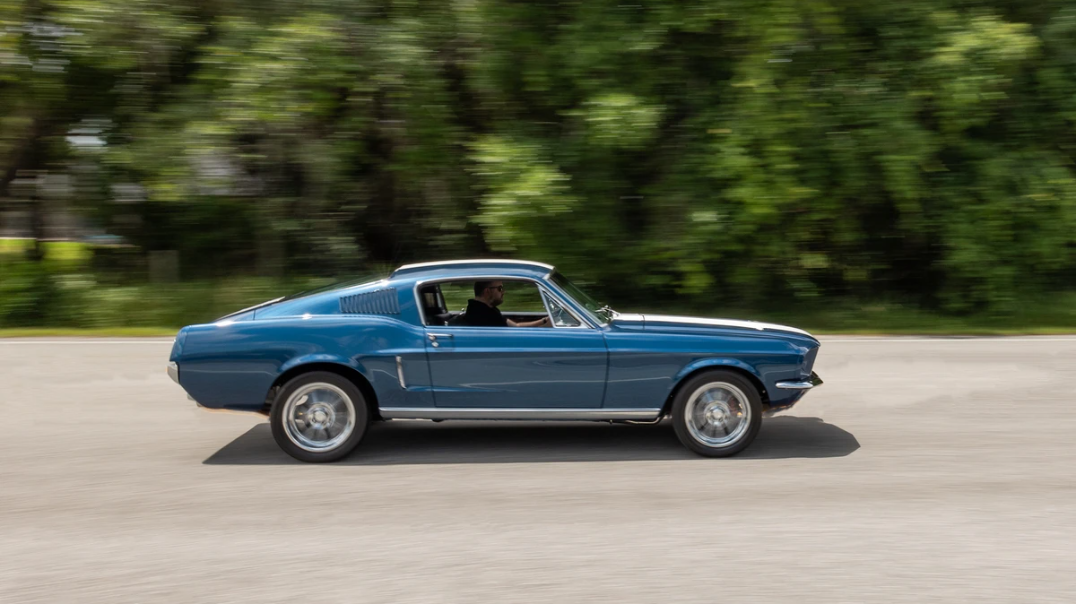
By 1966, the Mustang had undergone refinements to enhance its appeal and solidify its place in automotive history. While staying true to the original’s spirit, Ford introduced subtle design tweaks and improved performance options. The 1966 Fastback stands out as a symbol of this evolution, showcasing a blend of elegance and power that captured the imagination of drivers. Key updates included refined grille designs, improved suspension systems, and the introduction of new optional packages that made customization more accessible for buyers. These updates also reflected Ford’s ability to listen to customer feedback, ensuring the Mustang stayed ahead of its competitors in the rapidly growing pony car market.
The 1966 Mustang Fastback’s sleek, aerodynamic silhouette sets it apart. Its elongated roofline slopes gracefully into the rear, giving it a dynamic, sporty look. This design wasn’t just about aesthetics—the fastback shape improved aerodynamics, making it ideal for high-speed performance and racing enthusiasts. The sharp contours and muscular stance also contributed to its aggressive appearance, ensuring it turned heads wherever it went. Additionally, the fastback design provided practical benefits, such as improved rear visibility and a larger trunk space compared to the coupe variant, making it both stylish and functional.
Ford offered an array of vibrant colors for the 1966 Mustang, allowing buyers to personalize their vehicles. Popular choices included Candyapple Red, Nightmist Blue, and Ivy Green. For those seeking something more understated, Ford provided classic shades like Wimbledon White and Raven Black. These bold colors, paired with chrome accents, made the Mustang a head-turner on any road. Additionally, the option for racing stripes and unique decals allowed buyers to give their cars a distinct and sporty touch. Special-order colors and dealer-installed customizations further expanded the range of possibilities, ensuring no two Mustangs had to look alike.
Inside, the 1966 Mustang Fastback offered comfortable bucket seats with high-quality upholstery. Buyers could choose from materials like vinyl or optional deluxe trims, which elevated the cabin’s elegance. The deluxe interior, known as the Pony Interior, featured embossed galloping horses on the seatbacks and door panels, adding a touch of flair. The interior provided ample legroom and a driver-focused layout, ensuring comfort during long drives while maintaining a sporty feel. Additionally, Ford offered optional rear folding seats in the fastback model, increasing cargo versatility and catering to drivers who needed practicality alongside performance.
The dashboard featured a clean, straightforward design with easy-to-read gauges. From the speedometer to the fuel gauge, everything was strategically placed to enhance usability. Optional upgrades included a Rally-Pac, which added a tachometer and clock, catering to drivers who craved a more sophisticated driving experience. The inclusion of stylish chrome trim and woodgrain accents in higher trims elevated the interior’s aesthetic appeal, making it both functional and visually pleasing. Buyers could also select upgraded audio systems, such as the AM/FM radio with an optional 8-track player, bringing entertainment to long journeys. The thoughtful placement of controls ensured that drivers could focus on the road while enjoying a luxurious cabin experience.
The 1966 Mustang Fastback offered several V8 engines, including the powerful 289-cubic-inch engine. This engine came in various configurations, delivering between 200 to 271 horsepower. For those seeking top-tier performance, the "Hi-Po" (High Performance) version of the 289 V8 was the ultimate choice. It featured a solid-lifter camshaft and dual exhaust, enhancing both power and sound, making it a favorite among enthusiasts. These engines were paired with either a 3-speed manual, 4-speed manual, or automatic transmission, offering flexibility to suit different driving styles. The V8 options not only provided thrilling acceleration but also gave the Mustang its signature growl, a sound that continues to resonate with car lovers.
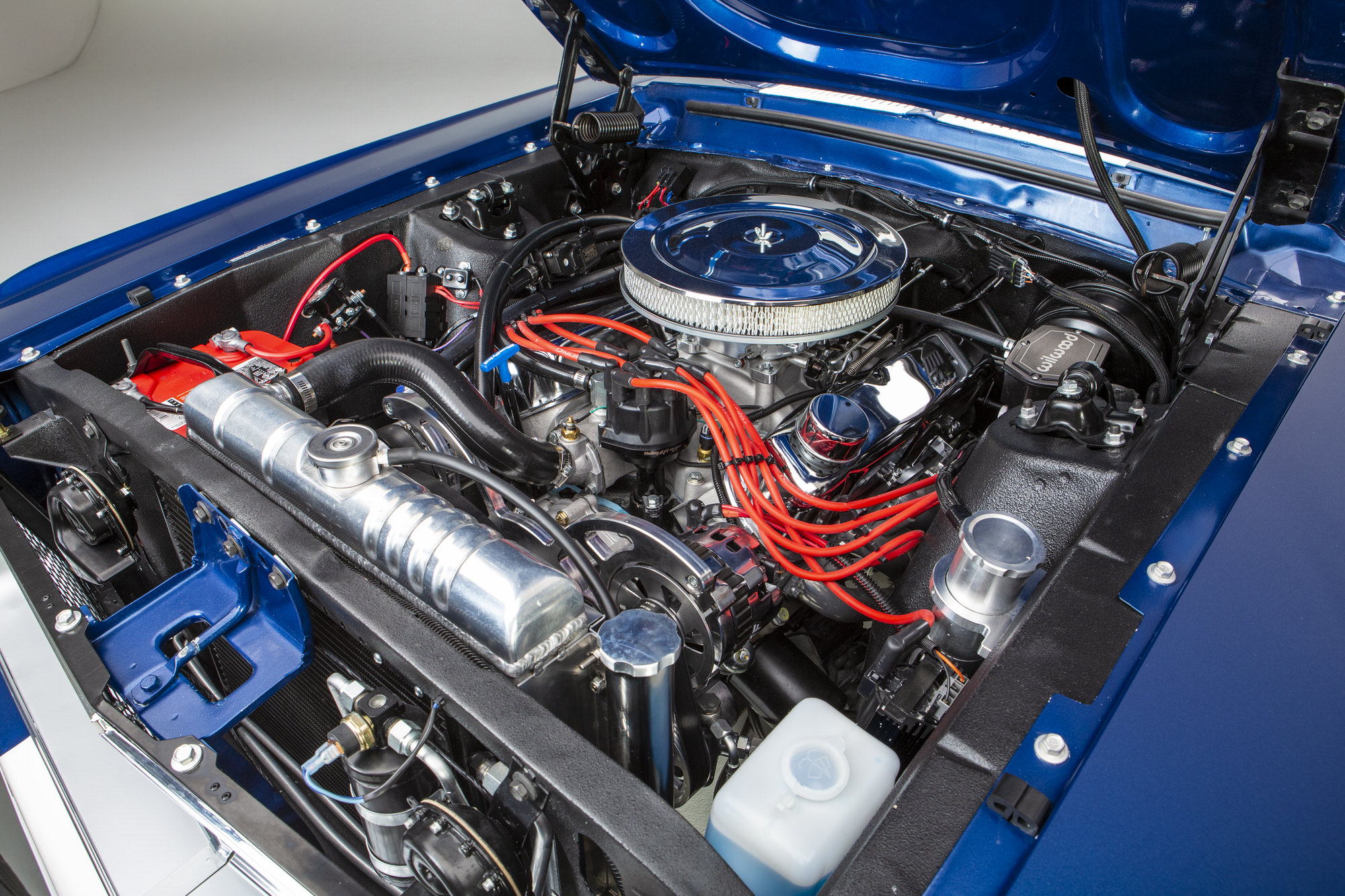
While V8s stole the spotlight, Ford also provided a 200-cubic-inch inline-6 engine. This option catered to buyers who valued efficiency over raw power, delivering reliable performance at a lower cost. Despite its modest output, the inline-6 offered smooth operation and adequate performance for daily driving, making it an appealing choice for budget-conscious buyers. Its lower weight also contributed to better fuel efficiency and handling, making it a practical choice for urban driving. The inline-6 served as a reminder of the classic Mustang’s accessibility, ensuring it could be enjoyed by a broader audience.
Depending on the engine choice, the 1966 Mustang Fastback delivered between 120 and 271 horsepower. Torque figures ranged from 190 lb-ft for the inline-6 to a robust 312 lb-ft for the High-Performance V8, ensuring impressive acceleration and pulling power. The variety of options allowed buyers to choose a setup that matched their performance needs, whether for leisurely cruising or spirited driving. Enthusiasts appreciated the car’s ability to deliver both power and reliability, making it suitable for various driving conditions. With the right setup, the Fastback could transform from a daily driver to a weekend warrior with ease.
With the High-Performance V8, the 1966 Mustang Fastback could accelerate from 0 to 60 mph in just under 8 seconds. Top speeds exceeded 120 mph, making it a formidable competitor in its class. The combination of power and lightweight construction gave the Fastback an edge in performance, particularly on straightaways and tracks. Drivers who opted for performance packages could further improve acceleration and handling, creating a truly exhilarating driving experience. These specs made the Fastback not only a stylish car but also a true performance machine capable of holding its own against its rivals.
The 1966 Mustang Fastback was known for its responsive handling and balanced ride quality. Its lightweight chassis and well-tuned suspension allowed drivers to confidently navigate winding roads. Optional upgrades like power steering and disc brakes further enhanced control and safety. The car’s suspension setup, including front coil springs and rear leaf springs, provided a blend of comfort and agility that appealed to a wide range of drivers. Additionally, the low center of gravity contributed to stability during cornering, making it a favorite among enthusiasts who valued spirited driving. The inclusion of optional traction bars further improved handling, ensuring that the power generated by the V8 engines translated into controlled and confident driving.
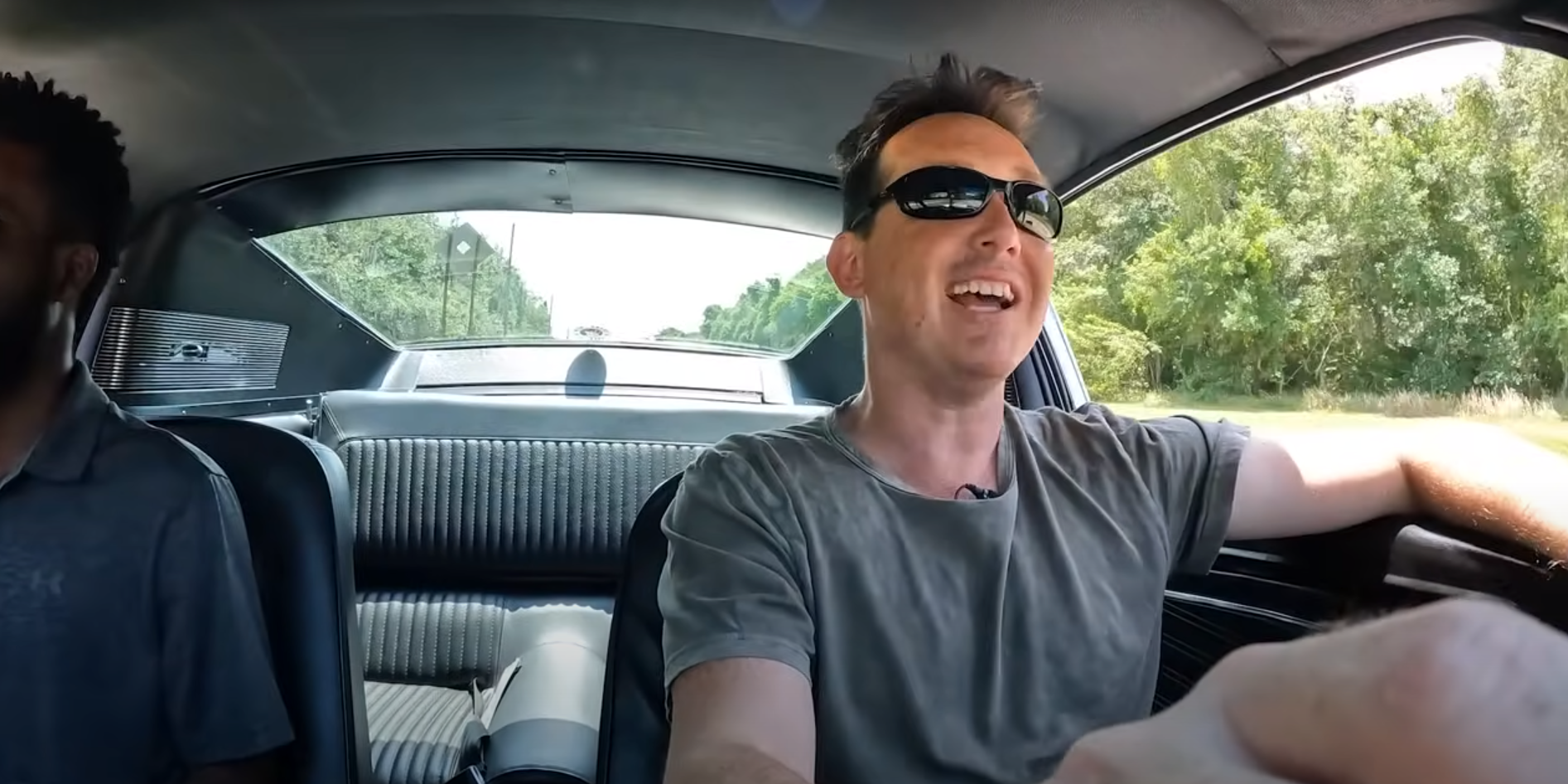
On the road, the 1966 Mustang Fastback excelled in delivering a thrilling driving experience. Whether cruising down highways or taking sharp corners, it combined smooth performance with a sense of connection to the road that modern cars often lack. Enthusiasts often praised the car for its raw, unfiltered driving dynamics, which made every journey an adventure. Its ability to adapt to both leisurely drives and high-speed pursuits showcased its versatility, solidifying its status as an automotive icon. Many owners relished the way the Mustang brought a sense of occasion to even the most mundane trips, making it a joy to drive.
The 1966 Mustang Fastback remains a sought-after classic car. Over the years, its value has steadily appreciated, making it a worthwhile investment for collectors. Limited production numbers and its iconic status contribute to its high demand in the market. Enthusiasts often seek out original models with factory specifications, as these tend to command the highest prices at auctions and private sales. The growing popularity of classic car shows and restoration events has also increased interest in this iconic vehicle, further driving up its value. As Mustang clubs and enthusiast communities continue to thrive, the legacy of the 1966 Fastback only grows stronger.
Key factors influencing the value of a 1966 Mustang Fastback include its condition, originality, and rarity. Models with matching numbers (original engine and transmission) and rare factory options fetch the highest prices. Restoration quality also plays a significant role, as well-maintained examples command premium valuations. Other factors, such as documented ownership history and unique features like factory-installed air conditioning, can further elevate a car’s desirability. Modifications, while popular among some enthusiasts, can sometimes detract from the car’s value if they deviate significantly from factory specifications. For collectors, finding an unmodified Fastback in excellent condition is like uncovering a piece of automotive treasure.
Restoring a 1966 Mustang Fastback is a rewarding journey, but sourcing authentic parts can be a challenge. Fortunately, many specialized suppliers and online marketplaces cater to Mustang enthusiasts, offering everything from engine components to trim pieces. Joining car clubs and online forums can also be invaluable for finding rare parts and gaining insights from experienced restorers. Attending classic car swap meets and auctions can provide access to hard-to-find components, ensuring that every detail of the restoration is accurate. The sense of community among Mustang enthusiasts often makes the restoration process an enjoyable and collaborative experience.
Common issues with the 1966 Mustang Fastback include rust, worn suspension components, and outdated electrical systems. Addressing these problems requires attention to detail and high-quality replacements. For instance, modern rust-proofing techniques and upgraded wiring harnesses can significantly improve the car’s longevity. Regular maintenance, such as oil changes and brake inspections, is crucial for preserving the car’s performance and reliability. Enthusiasts often recommend routine checks for fluid leaks and ensuring proper alignment to maintain the vehicle’s optimal performance. Proactively addressing these issues ensures that the Mustang remains roadworthy and enjoyable to drive for years to come.
The Shelby GT350 is the crown jewel of the 1966 Mustang lineup. This high-performance variant, developed by Carroll Shelby, featured a race-inspired suspension, a modified 289 V8 engine, and striking visual upgrades like racing stripes and side scoops. It’s a true collector’s dream. The GT350’s track-ready capabilities and aggressive styling set it apart from standard Mustangs, solidifying its place in automotive history. Shelby’s influence transformed the Mustang into a racing legend, making this model highly desirable among enthusiasts and collectors. Few cars can match the prestige and allure of owning a Shelby GT350.
Ford also offered optional high-performance packages for the 1966 Mustang Fastback. These included enhanced suspension, upgraded brakes, and specialized axle ratios. These packages allowed buyers to tailor their Mustangs for better track performance and handling. Features like limited-slip differentials and heavy-duty cooling systems made these models ideal for spirited driving and racing events. The availability of factory-installed performance upgrades underscored Ford’s commitment to catering to the diverse needs of its customers. These packages added another layer of excitement to an already thrilling car.
The 1966 Mustang Fastback stands as a testament to Ford’s ability to create a car that transcends time. Its combination of stunning design, versatile performance, and cultural significance ensures its place in automotive history. Enthusiasts around the world continue to cherish this classic for its unparalleled charm. Its legacy is further cemented by its influence on the automotive industry and its role in shaping the muscle car era. Few cars have achieved the iconic status and lasting impact of the Mustang, making it a timeless treasure for generations to come.
Owning a 1966 Mustang Fastback is more than just owning a car; it’s embracing a piece of history. From its exhilarating driving experience to its timeless design, this classic vehicle offers a unique connection to an era defined by innovation and style. For anyone passionate about classic cars, the 1966 Mustang Fastback is a dream worth pursuing. The joy of restoring, maintaining, and driving such an iconic car makes it a rewarding experience for any enthusiast. Its enduring appeal and investment potential ensure that it will remain a cherished classic for years to come.
Embark on an ECD Auto Design journey! Connect now, and our experienced sales team will be thrilled to guide you through building or acquiring your dream vehicle.
Unit 107 - 4930 Industrial Lane Kissimmee, FL 34758
(407) 483-4825
UK Logistics Center
Unit 5 Crown Industrial Estate
Oxford Street
Burton-on-Trent
DE143PG
01283 450179
ECD Auto Design is an Equal Opportunity Employer.
© 2023 ECD Automotive Design. All images are the property of ECD Auto Design and cannot be used without our consent. E.C.D. Automotive Design is not affiliated, associated, authorized, endorsed by, or in any way officially connected with Jaguar Land Rover Limited, or any of its subsidiaries or affiliates, including Jaguar Land Rover North America, LLC. DEFENDER and RANGE ROVER are registered trademarks of Jaguar Land Rover Limited. We build restored defenders, range rover classic's, and jaguar etypes.
[booked-calendar calendar=6528]